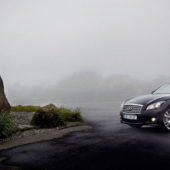I’ve just returned from a vacation time in Cyprus. It had all the usual suspects in the typical holidays on a Mediterranean island: warm weather, persistent sun, uncountable layers of history in the shape of ruins and remnants, sunburnts, friendly locals and good, fresh food.
But the apparently easy-going and relaxed island of Cyprus also holds in a somewhat mysterious political entity that tourist agencies would rather avoid telling you about unless directly asked.
This entity is the secluded Turkish Republic of Northern Cyprus, a para-state located on the Northern part of the island. This wannabe nation covers one third of it and lays behind the so-called Attila line, a Turkish military held border.
The country, which as a matter of fact does exist on reality but it is not recognised by any country except Turkey, was born in 1983 after the peace negotiations that followed the 1974 conflict between the Greek-Cypriots and Turkish-Cypriots communities brought no solution.
Since then, Northern Cyprus has been functioning as a de facto state.
Cyprus entered the European Union in 2004, but given that the area is not under effective control of the legitimate Republic of Cyprus, the EU officially considers the area as EU territory under Turkish military occupation and thus indefinitely exempt from EU legislation until a settlement has been found.
Entering the TRNC
Since the UN-controlled buffer zone between the TRNC and the Republic of Cyprus was opened in 2003 and especially after the latter joined the EU, restrictions in traffic of all kinds between the two parts of the island have relaxed and now there’s officially a free movement of peoples across the borders. However, entering this tiny Republic still feels a bit uncomfortable.
You can do it through several entry points (Greek-Cypriots don’t use the word ‘border’ as that would help legitimise the rogue republic of the North), and except for the pedestrians-only Ledra pass in central Nicosia (which is apparently loose but it has its quirks too), most of the checkpoints are at the heart of fortified military areas with dozens of no-photos signs and military warnings, remembering us that this is no ordinary country.
Propaganda also plays its role here. As you approach the TRNC from the Greek side, signals and warnings in Greek and English pop up here and there, warning that you’re about to enter an alien territory controlled by the Turkish Army. Granted, it’s true, yet it adds some more restlessness to the traveller’s guts.
To this feeling it doesn’t help the presence of the UN-flagged buildings throughout the buffer zone used by blue helmets soldiers, whether Slovak or Finnish, on a mission to keep inter-ethnic tensions low.
All of these things make you feel a bit anxious when moving inside the TRNC. The numerous military bases, the fences across the borders, the derelict buildings, the soldier vehicles… It makes you feel as if you were in a lighter, Mediterranean version of North Korea.
Certainly, the country is highly militarized. Together with the indigenous 5,000-man Turkish Cypriot Security Force (TCSF), the mainland Turkish Armed Forces maintain a Cyprus Turkish Peace Force (CTPF) consisting of around 30-40,000 troops. These troops, whose presence is highly controversial for both Greek-Cypriots (who see them with natural hostility) and Turkish Cypriots (who see them as a patronizing force from Turkey) are deployed principally along the Green Line that marks the island’s division.
However, while the South is centered about commerce, tourism, shopping, banking and the important shipping industry, the North is more orientated towards the military, which is the nexus of the TRNC’s dependence on Turkey.
Dependence on Turkey
In fact, despite the fact that Northern-Cypriots have created many of the institutions of a functioning state, the country is still dependant on Turkey to overcome the many obstacles posed by being unrecognized. Like other de facto states such as Abkhazia, Nagorno-Karabakh, South Ossetia or the Transnistrian Moldovan Republic (among others), the Turkish Republic of Northern Cyprus has gross handicaps in many areas.
International telephone calls, for instance, are routed via a Turkish dialing code (+90 392) as Northern Cyprus has neither its own country code nor official ITU prefix. Postal mail, on the other hand, must be addressed ‘via Mersin 10, Turkey’ as the Universal Postal Union does not recognise Northern Cyprus as a separate entity.
Because the TRNC’s airport at Ercan is not recognised by OATA, all aircrafts willing to land on the TRNC have to touch Turkish soil first and after this compulsory flight stopover they can make their way into the breakaway state. In a similar way, no ship can harbour the TRNC ports unless it comes from Turkey.
Turkish Cypriots have their own TNRC-issued passports, but they are not valid to travel except for Turkey. In order to travel internationally, Northerners use instead their Republic of Cyprus passports, which they are entitled to legally because the legitimate Republic of Cyprus consider indigenous Turkish-Cypriots as Cypriot citizens with full rights and issues them their rightful passport.
From an economical point of view, rather than a country, the TRNC is a protectorate of Turkey – without Anakara’s support, the country would collapse. It has the Turkish lira as currency (though Euros are also accepted), and the Turkish government allocates around $400 million annually from its budget to help raise the living standards of the Turkish Cypriots.
Branding the TRNC
Of course, this dependence on Turkey does not prevent Turkish Cypriot leadership to brand the secessionist entity just like a real, full-fledged country.
The TRNC has its own national symbols. Its flag is based on the flag of Turkey with the colors reversed and two horizontal red stripes added at the top and bottom. It retains the white field of the flag of Cyprus and features the crescent with the star, which is a symbol of the Turkic peoples.
The ensign, which was the result of a competition to find a new representative flag for the ‘TRNC’, is probably the only one flag that can be seen from space, as there is a gigantic drawing of it on a hill’s slope just outside Nicosia, the divided capital. The flag can be seen from any high point in the capital city, despite the fact that Greek-Cypriots have long complained that it’s both offensive and provocative to them.
Paradoxically for a military-occupied country, its coat of arms features a dove carrying a branch of olive – an universal symbol of peace. And it’s got an hymn too – ?stiklal Mar??, which is the same as the Turkish national anthem.
Together with a proper flag, the most ambitioned symbol of statehood is an Internet country code top-level domain. But since Northern Cyprus has no country code assigned, it uses the Turkish-dependant second-level domain .nc.tr
Despite efforts to show the contrary, the country has a feeling of exceptionality. The TRNC aims to be a legitimate state, yet the omnipresent Turkish and TRNC flags, rather than prove it, seem to (over)compensate the fact that no one but themselves consider it a real, full-fledged country.
In addition, the numerous patriotic statues, symbols and monuments scattered all around the country, rather than project the idea of a country, seem to confirm that this breakaway region has yet to convince the international community that it deserves being upgraded to statehood. While they gain this recognition, they continue to build their country branding.




